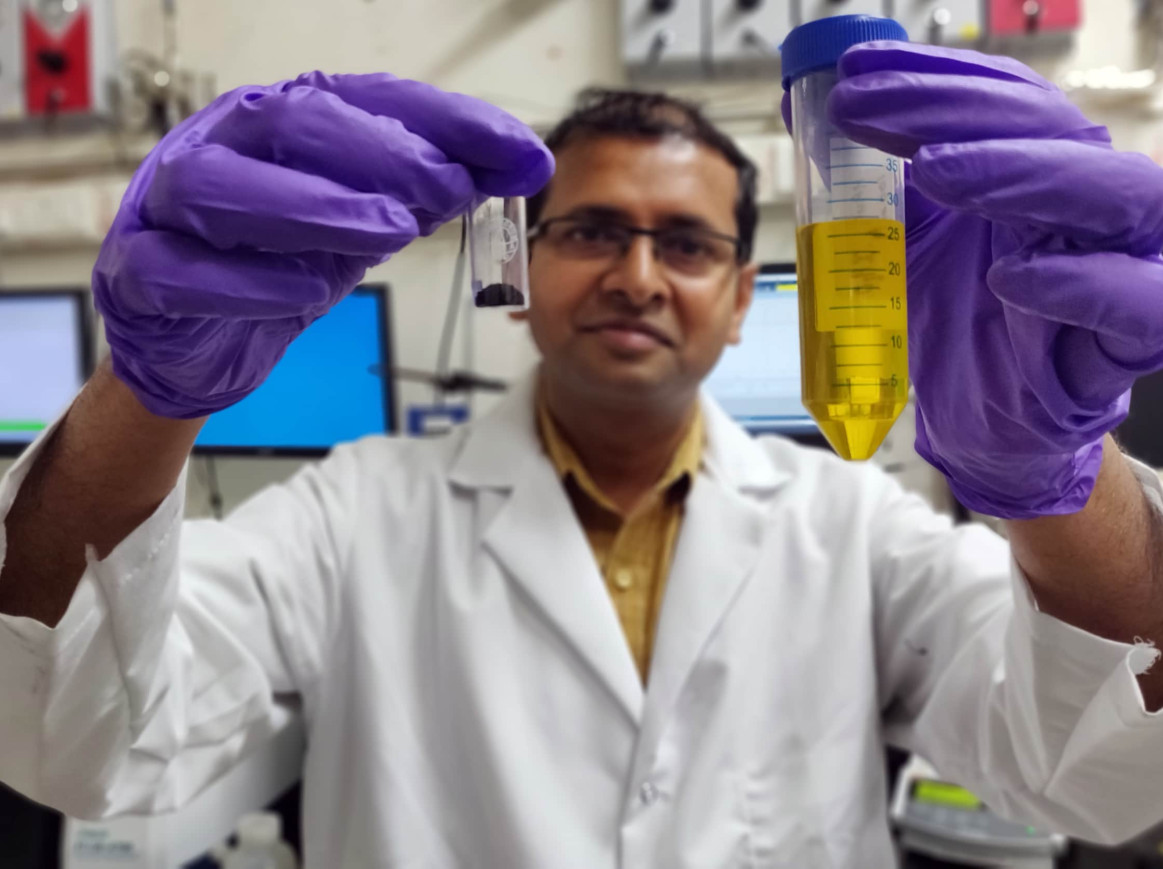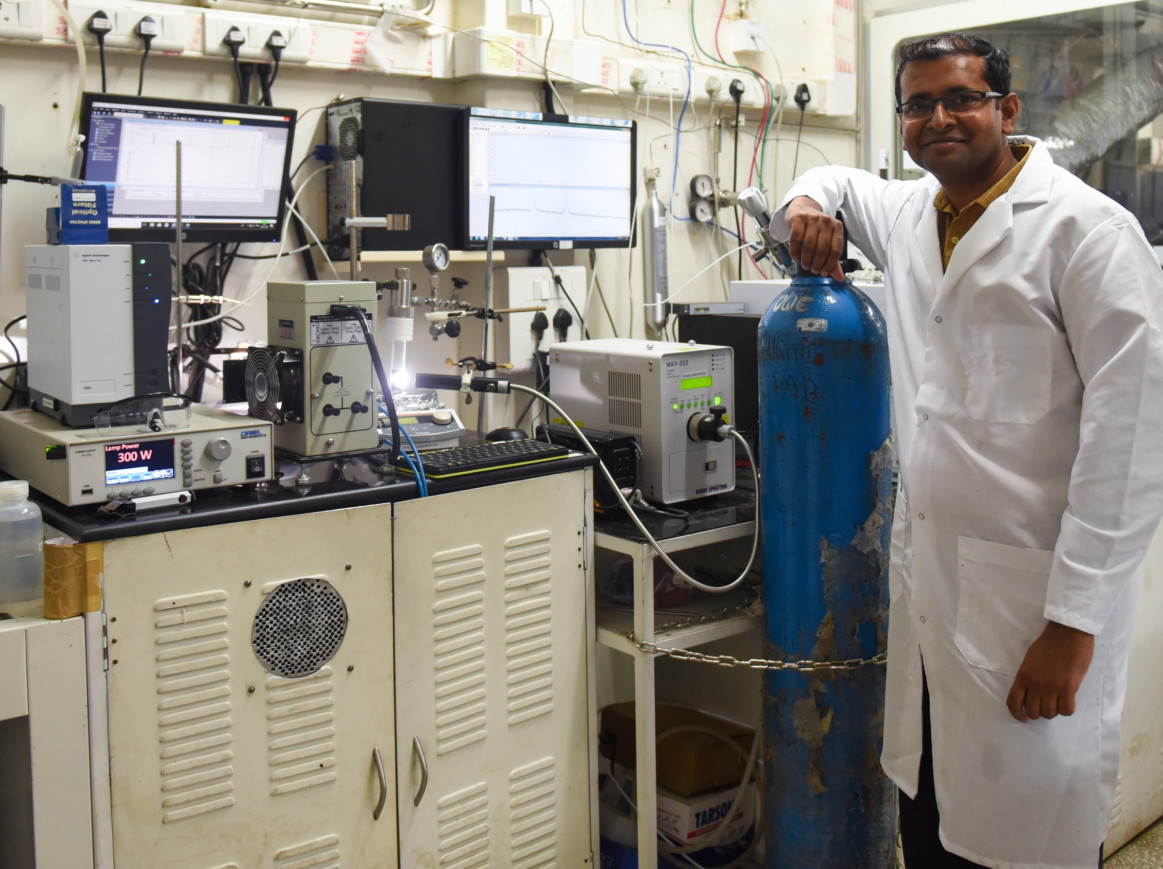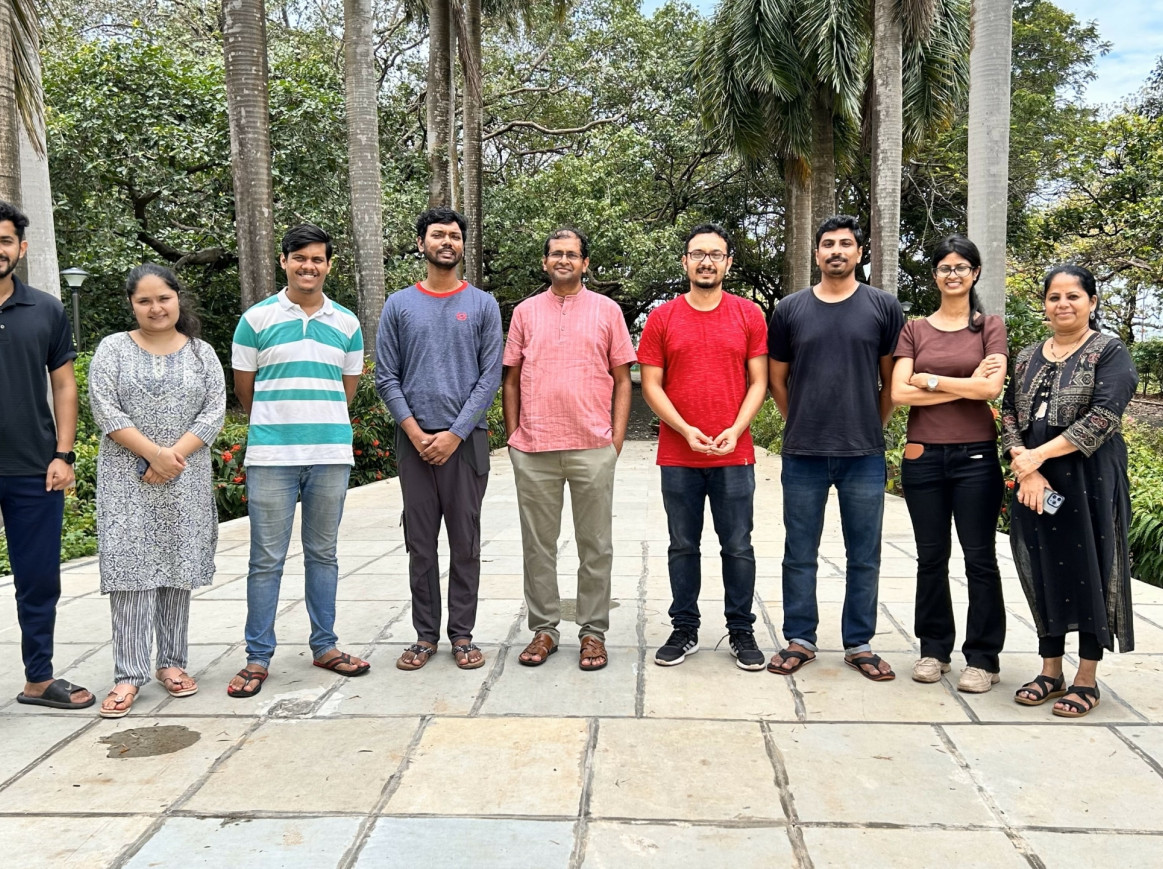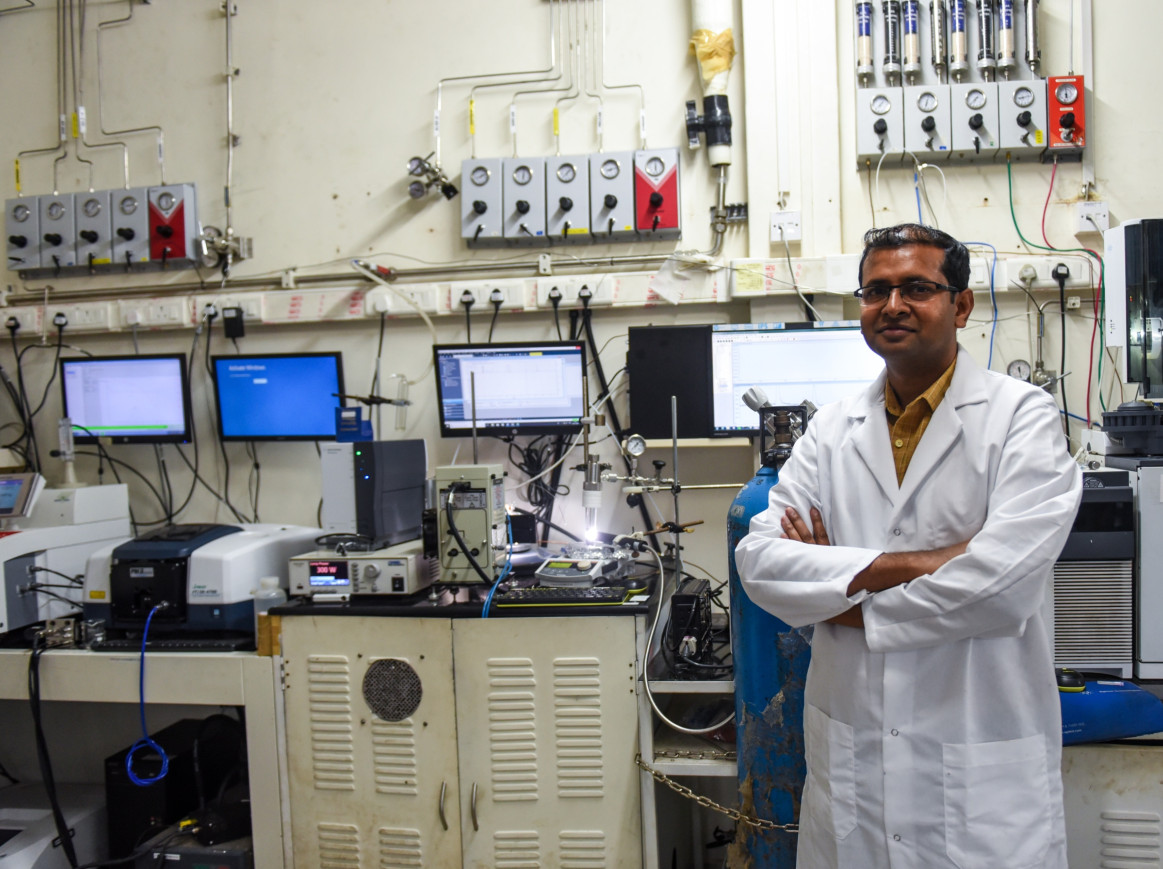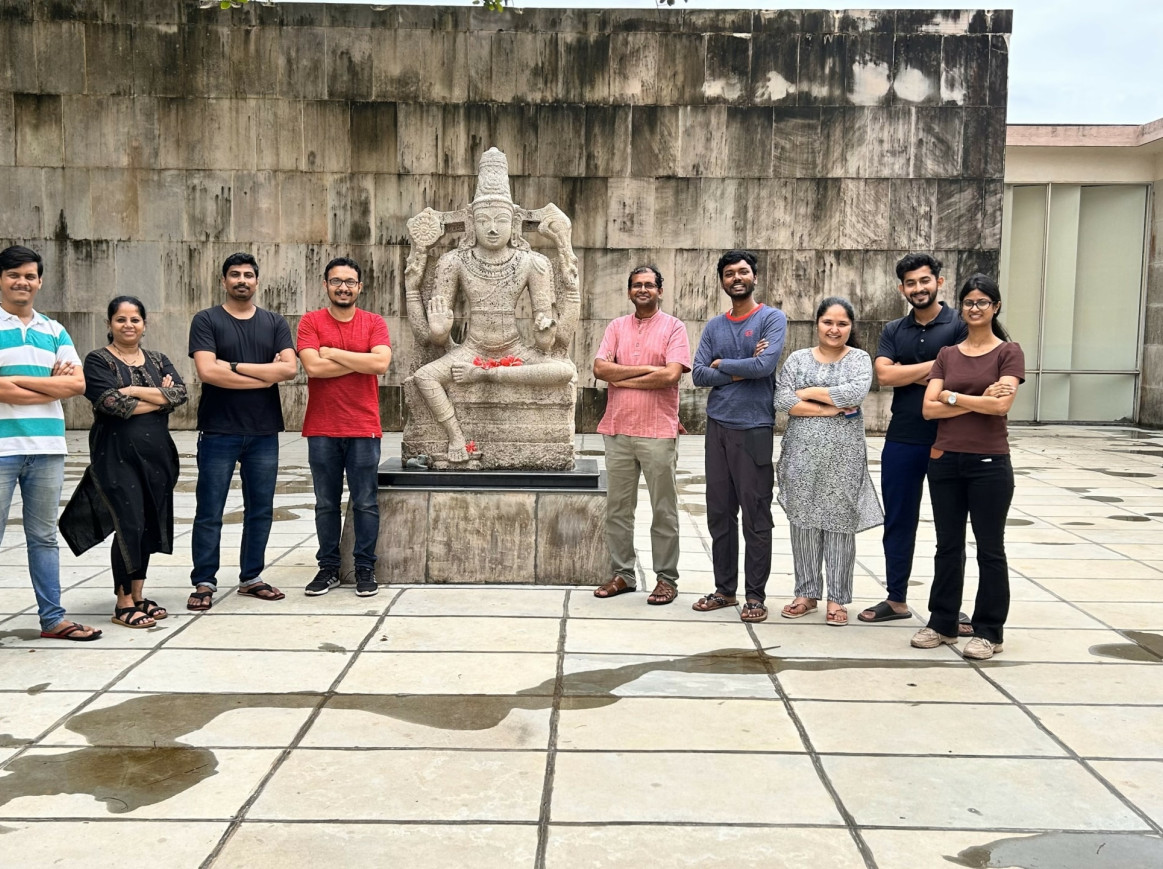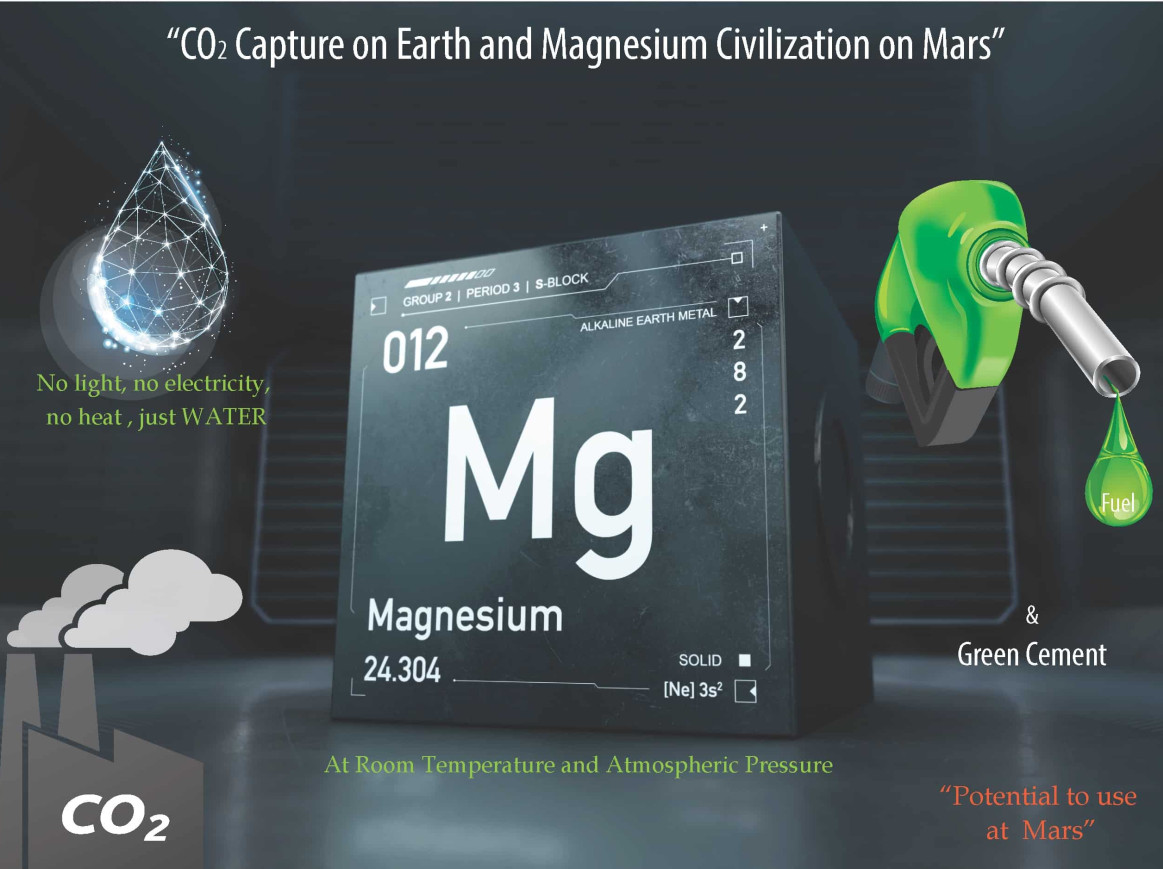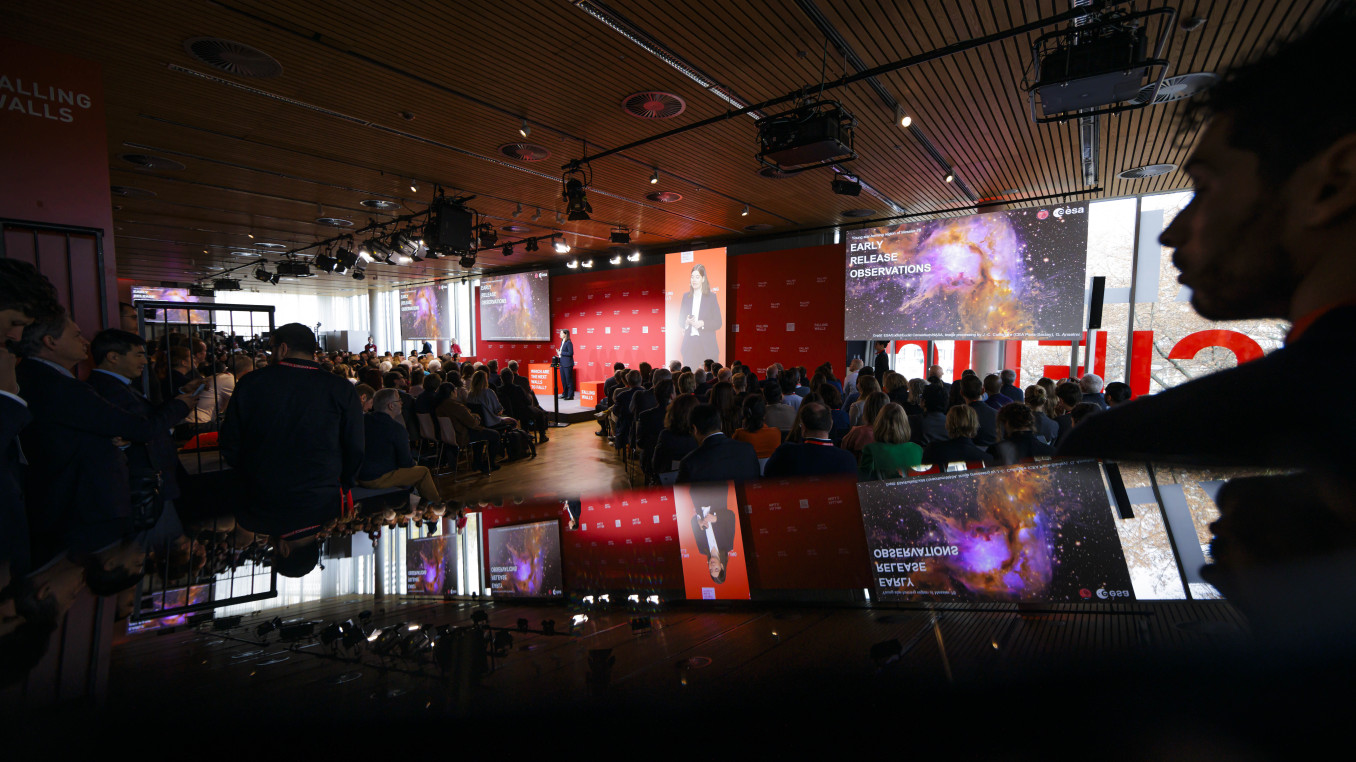Pioneering CO2 conversion: Vivek Polshettiwar’s innovative path to sustainability
Winner Interview 2023: Physical Sciences
Discover the visionary work of Vivek Polshettiwar, a leading researcher at Tata Institute of Fundamental Research (TIFR), Mumbai. His groundbreaking research focuses on transforming CO2 into a valuable resource through innovative nanomaterials and solar energy. Dive into his journey from a small village to international recognition and explore how his pioneering "black gold" catalysts could revolutionise CO2 hydrogenation and combat climate change.
Which wall does your research break?
Global warming poses a significant threat to the planet and all living beings. One of the primary contributors to global warming is the escalating atmospheric CO2 levels, primarily stemming from the combustion of fossil fuels in our everyday lives, including electricity generation, transportation, and industrial activities. To address this challenge, CO2 hydrogenation utilizing green hydrogen emerges as a highly promising process, offering a potential solution to three critical issues: I) the excessive accumulation of CO2, II) the temporal disparity between solar electricity production and demand, and III) hydrogen gas storage. Our endeavor focuses on achieving this solution in a sustainable manner, breaking down barriers to attain CO2 "net zero" and potentially averting the impending climate catastrophe. Through extensive research, my team has pioneered the solution-phase synthesis of Dendritic Plasmonic Colloidosomes, also known as "black gold," employing DFNS (Dendritic Fibrous Nanosilica) to control the interparticle distances between gold nanoparticles. This black gold material exhibits exceptional light absorption properties, effectively harnessing the entire visible and near-infrared spectrum of solar radiation. Remarkably, black gold serves as a catalyst, facilitating the conversion of CO2 into fuel at atmospheric pressure and temperature, employing solar energy. Analogous to real trees, our developed black gold acts as an artificial tree, utilizing CO2, sunlight, and water/hydrogen to produce fuel. This groundbreaking work represents a pioneering effort and a significant step toward the development of "Artificial Trees" capable of capturing and converting CO2 into fuel and valuable chemicals. Additionally, we have demonstrated the exceptional catalytic activity of plasmonic black gold-nickel in CO2 hydrogenation, utilizing visible light. This novel catalyst exhibited a multifold increase in catalytic activity compared to black gold, achieving the best-reported CO production rate and selectivity. In another breakthrough, we demonstrated the conversion of CO2 to fuel and green cement through a simple process involving the addition of magnesium powder to water. This groundbreaking method requires no external energy sources such as heat, electricity, or light but solely relies on the combination of water and magnesium, resulting in the rapid transformation of CO2. We are currently working towards scaling up this process and preparing for commercialization in collaboration with one of India's largest industries. Ultimately, our vision encompasses the integration of plasmonic, defect-based (https://www.pnas.org/doi/10.1073/pnas.1917237117; https://pubs.acs.org/doi/10.1021/jacs.3c01336), and solid acid catalysts (https://www.nature.com/articles/s41467-020-17711-6), aiming to realize our dream of a comprehensive CO2 conversion process. By combining these innovative approaches, we aspire to overcome barriers and achieve the ultimate goal of CO2 net zero, significantly contributing to combating climate change and securing a sustainable future for our planet. The research aims to overcome several barriers or limitations in the field of CO2 conversion and climate change mitigation. These include: 1. The research aims to develop efficient catalysts and processes to convert CO2 into useful fuels and chemicals, thereby reducing its concentration in the atmosphere. 2. Temporal mismatch in solar energy: Solar energy production may not always align with the demand for electricity. The research focuses on developing methods to use solar energy efficiently by converting it into storable fuels, which can be used whenever needed, helping to address the temporal disparity issue. 3. Hydrogen gas storage: Hydrogen gas is a clean and renewable energy carrier, but its storage and transportation present challenges. The research investigates using CO2 hydrogenation to store hydrogen in the form of chemicals, providing a potential solution for safe and efficient storage of hydrogen.
What inspired or motivated you to work on your current research or project?
1. Environmental concerns: The pressing issue of climate change and its detrimental effects on the planet and future generations is my main motivation. I want to find solutions that can mitigate the impact of climate change and create a more sustainable world.
2. Energy transition: The need to transition from fossil fuels to renewable energy sources is a compelling motivation. I want to continue developing alternative energy technologies that can provide clean and sustainable energy solutions for a growing population.
3. Innovation and scientific curiosity: My curiosity to explore new frontiers of knowledge and push the boundaries of what is possible. The challenge of developing efficient CO2 conversion processes and discovering novel catalysts ignites my passion for innovation and discovery.
4. Societal impact: The potential societal impact of my research and the prospect of creating technologies and solutions that can address critical global challenges, improve lives, and contribute to a more sustainable future. 5. Collaboration and interdisciplinary research: The opportunity to collaborate with experts from various disciplines and work together towards a common goal also inspires me. This allows cross-pollination of ideas and the collective effort to tackle complex problems.
These motivations contributed to my drive and dedication to working on CO2 conversion and sustainable energy research, ultimately aiming to make a positive impact on the world.
In what ways does society benefit from your research?
1. Climate change mitigation: By efficiently converting CO2 into useful products, the research offers a means to combat climate change and reduce greenhouse gas emissions, contributing to a more sustainable future.
2. Renewable fuel production: The ability to convert CO2 into fuels using renewable energy sources like sunlight presents an opportunity to produce clean and sustainable alternatives to fossil fuels, reducing dependence on non-renewable resources and mitigating environmental impact.
3. Energy storage solutions: Converting CO2 into storable fuels provides a means to store and utilize excess renewable energy generated during peak production periods, enhancing the stability and reliability of renewable energy systems. 4. Industrial applications: The development of efficient catalysts and processes for CO2 conversion opens doors for innovative and sustainable industrial applications. It can enable the production of chemicals and materials in a more environmentally friendly manner, reducing the carbon footprint of various industries.
Overall, our research aims to address critical environmental challenges, promote renewable energy utilization, and pave the way for a more sustainable and resilient society.
Looking ahead, what are your hopes or aspirations for the future based on your research or project?
Our hopes and aspirations for the future are centered around achieving significant advancements in the field of CO2 conversion and sustainable energy. Here are some of our aspirations:
1. Carbon neutrality and climate change mitigation: We envision a future where our research contributes to achieving carbon neutrality by effectively converting CO2 emissions into valuable products. This would significantly reduce greenhouse gas emissions and help mitigate the impact of climate change on the planet.
2. Transition to renewable energy: We aspire to accelerate the transition from fossil fuels to renewable energy sources by developing efficient methods to convert CO2 into clean and renewable fuels. This would help reduce our reliance on non-renewable resources and pave the way for a more sustainable energy landscape.
3. Technological innovation and commercialization: We hope that the breakthroughs achieved in this research can be translated into practical applications and technologies that benefit society. We aim to see the commercialization of CO2 conversion processes, making them accessible and scalable for industries and communities worldwide.
4. Circular economy and resource efficiency: By utilizing CO2 as a valuable resource, we envision a future where waste carbon emissions are transformed into useful fuels, chemicals, and materials. This would promote a circular economy model, minimizing waste and maximizing resource efficiency.
5. Global collaboration and impact: We aspire to foster international collaboration and knowledge sharing to accelerate progress in CO2 conversion research. By working together, we can collectively address the global challenges of climate change and create a sustainable future for all.
Ultimately, our hopes for the future are rooted in realizing a low-carbon society that harnesses the power of CO2 conversion technologies to combat climate change, promote renewable energy, and contribute to a more sustainable and resilient world.
